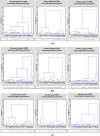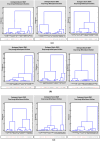Temporal profile of amino acids and protein fractions in the developing kernel of maize germplasm
- PMID: 39511239
- PMCID: PMC11543656
- DOI: 10.1038/s41598-024-65514-2
Temporal profile of amino acids and protein fractions in the developing kernel of maize germplasm
Abstract
Maize, the most important source of animal and poultry feed, is deficient in essential amino acid methionine. Therefore, methionine is added to the poultry feed to meet its nutritional requirements. Keeping in view, an urgent requirement exists to develop high-methionine maize. The present study was designed to understand the synthesis and accumulation pattern of methionine, lysine, tryptophan, total protein, and protein fractions in the developing maize kernel. Results revealed that methionine accumulation starts before 15 DAP and increases towards maturity. Total protein, albumin, and globulin accumulation showed a declining trend, whereas, prolamin, prolamin-like, glutelin, and glutelin-like fractions increased with kernel maturity. Methionine showed a significant positive correlation with prolamin and a negative correlation with glutelin, indicating their use as markers to select high methionine lines. Higher level accumulation of lysine, tryptophan, and methionine, the three essential amino acids deficient in maize, was observed highest in lines 174705 and 194010 indicating their use as a potential donor for developing high methionine maize genotypes. The high methionine line identified in the present study can be used in breeding programs through introgressing maize germplasm of diverse genetic backgrounds to develop high-yielding methionine-rich maize genotypes to develop a sustainable nutritive feed supply chain.
Keywords: Lysine; Maize; Methionine; Nutritional quality; Time course evaluation; Tryptophan; Zeins.
© 2024. The Author(s).
Conflict of interest statement
The authors declare no competing interests.
Figures







References
-
- FAO, World Food and Agriculture - Statistical Yearbook 2021, Rome (2022). 10.4060/cb4477en
-
- CROPS, Maize vision 2022 a knowledge report, Indian Maize Summit. Agricultural Times, FICCI, 1–34 (2018). https://agritimes.co.in/market-reports/maize-vision-2022-india/
-
- Gibbon, B. C. & Larkins, B. A. Molecular genetic approaches to developing quality protein maize. Trends genet.21, 287–232 (2005). - PubMed
-
- Huang, S. et al. Improving nutritional quality of maize proteins by expressing sense and antisense gents. J. Agric. Food Chem.52, 1958–1964 (2004). - PubMed
MeSH terms
Substances
LinkOut - more resources
Full Text Sources

